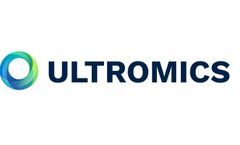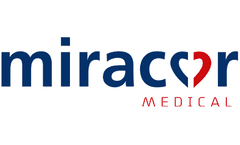Myocardial Infarction Articles & Analysis
20 articles found
Ischaemic heart diseases continue to be a major global health concern and a leading cause of death. To develop more effective treatments, it is essential for researchers to work with animal models that closely replicate human cardiac physiology. In a notable step forward, Pius et al. present a refined, minimally invasive ovine model of ischaemia–reperfusion–infarction which ...
Clinical trials have demonstrated the efficacy of hMSCs in promoting cartilage regeneration and improving heart function after myocardial infarction. Moreover, hMSCs are being investigated for their role in delivering gene therapy. ...
MMPs are involved in pathological processes such as hypertension, eclampsia, vascular inflammation, atherosclerosis, coronary syndromes and myocardial infarction, cerebral ischemia and ischemic stroke, peripheral arterial disease, aneurysms, chronic venous disease, etc. ...
In a clinical context, MSCs are instrumental in treating osteoarthritis, inflammatory bowel disease, graft-versus-host disease, myocardial infarction, and more. They also exhibit promising results in treating neurological disorders, diabetes, liver diseases, and in cancer therapy. ...
For patients with previous cardiovascular disease, the risk of myocardial infarction was also significantly reduced. 3. However, SGLT-2 inhibitors failed to reduce stroke or all-cause mortality. ...
HFrEF is more common in men, which might be the result of their greater susceptibility to developing myocardial infarction (MI). Additionally, men more easily develop eccentric left ventricular hypertrophy upon pressure overload. ...
Other effects of these medications include increasing diuresis and natriuresis, lowering blood pressure, stimulating erythropoiesis, improving cardiac energy metabolism, reducing inflammation, inhibiting the sympathetic nervous system, preventing cardiac remodeling, preventing ischemia-reperfusion injury, inhibiting the Na+/H+ exchanger, reducing hyperuricemia, increasing autophagy and lysosomal ...
In the treatment of thrombophlebitis, myocardial infarction, pulmonary infarction and diffuse intravascular coagulation, plasmin, streptokinase, urokinase, etc. can be applied to dissolve blood clots and prevent the formation of thrombus. ...
Pathophysiology, treatment options and hot topics Improvements In Stemi Treatment The immediate and long-term prognosis of patients experiencing an ST segment elevation myocardial infarction (STEMI) has changed dramatically since the introduction of coronary reperfusion therapies during primary percutaneous coronary intervention (pPCI). ...
Understanding coronary physiology is key for treating patients with ischemic heart disease in general, and patients with acute ST elevation myocardial infarction (STEMI) specifically. Coronary flow is regulated by myocardial oxygen consumption and can be increased by four-fold in healthy individuals. ...
Studies have shown that plasma ceramide can effectively predict the risk of atherosclerosis, myocardial infarction, ischemic heart disease, hypertension, stroke, type 2 diabetes, insulin resistance, etc. in the next 1-5 years. ...
This principle has been used in surgical expansion, purification of purulent wounds and the treatment of serosal adhesions in the thoracic and abdominal cavity. In the treatment of myocardial infarction, thrombophlebitis, pulmonary infarction and disseminated intravascular coagulation, streptokinase, plasmin, urokinase, etc. can be used to ...
Drugs It is mainly concentrated in patients with inflammatory diseases, especially in the treatment of rheumatoid arthritis, chronic polyarthritis, myocardial infarction, cardiovascular disease, tumor patients, and radiation therapy patients with inflammatory diseases. 2. ...
In some COVID patients, blood clots in larger vessels resulted in DVT, PE, stroke, and myocardial infarction. This has been happening even though these patients, in accordance with standard intensive care practice, are placed on anticoagulants like heparin to prevent clots as soon as they are admitted to the ICU. ...
VTE is a leading cause of death and disability worldwide and has the third-highest mortality rate out of any cardiovascular disease, behind myocardial infarctions and stroke. Unlike myocardial infractions and stroke, where mortality has improved considerably, VTE has seen an increase in cases, with no demonstrable change in mortality over the ...
A study connects days with high levels of pollution with myocardial infarctionMore several myocardial infarction happens when pollution levels are higher. ...
RSV has potent antioxidant, anti–inflammatory, and chemo–protective properties used as a biologically active supplement in the prophylaxis of myocardial infarction, diabetes, and tumours. The aim of this study was using nanotechnology to develop and examine a nanoparticle RSV. ...
The increase of the incidence of the IBCS as a whole was found to be 19.5%, that of hypertensive diseases 52.0%, and that of acute and subsequent myocardial infarction 53.2%. The incidence of cerebral infarction increased by a factor 10. An increase of the incidence of hypertensive diseases and cerebrovascular diseases was observed only among the ...
The aim of this study was to assess the value of the Cavity-to-Myocardium count ratio (CM ratio) calculated in the resting 99mTc-Sestamibi SPECT images to identify myocardial functioning status and recovery of myocardial function in patients with acute myocardial insult who have received thrombolytic therapy. The study demonstrates that the ...
(Circulation. 2000;101:2026-2029.) Key Words: thrombolysis, myocardial infarction, ultrasonics, ...











